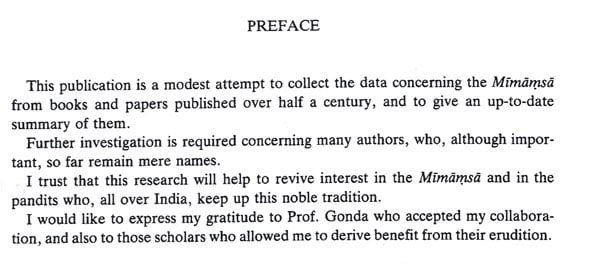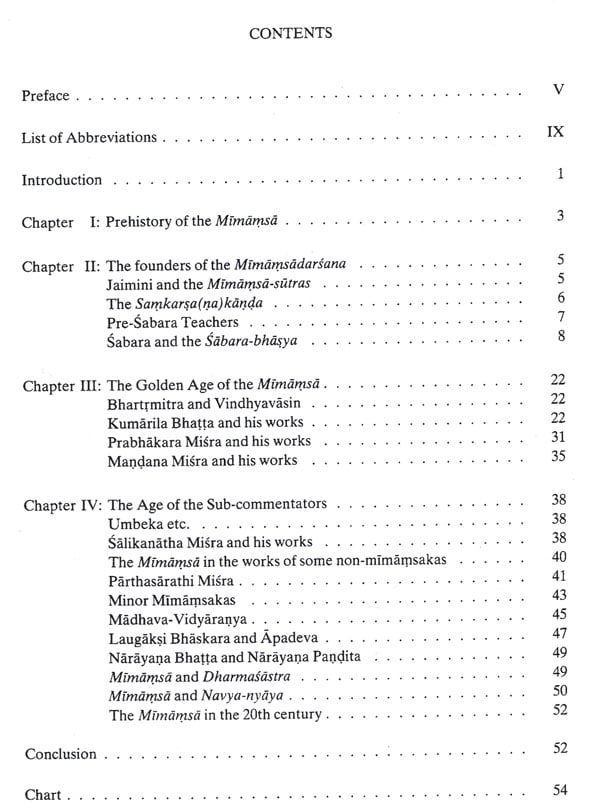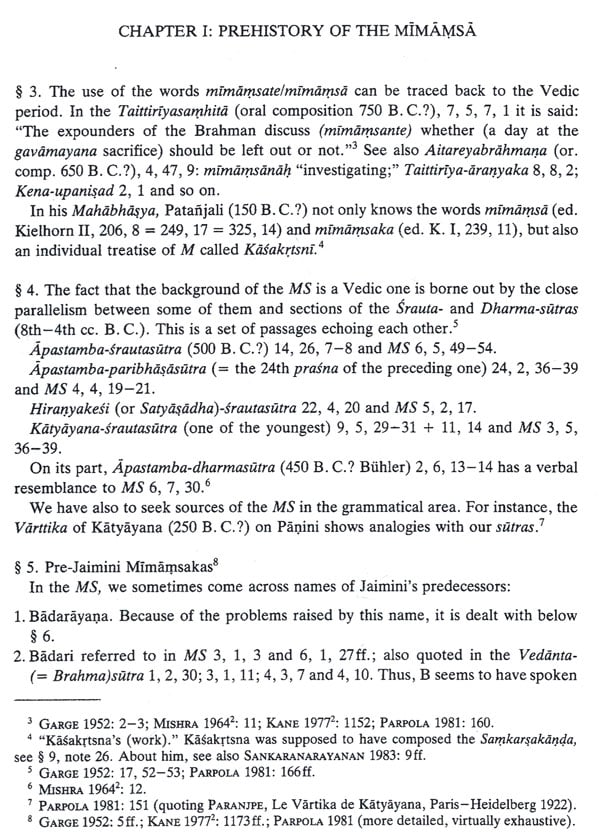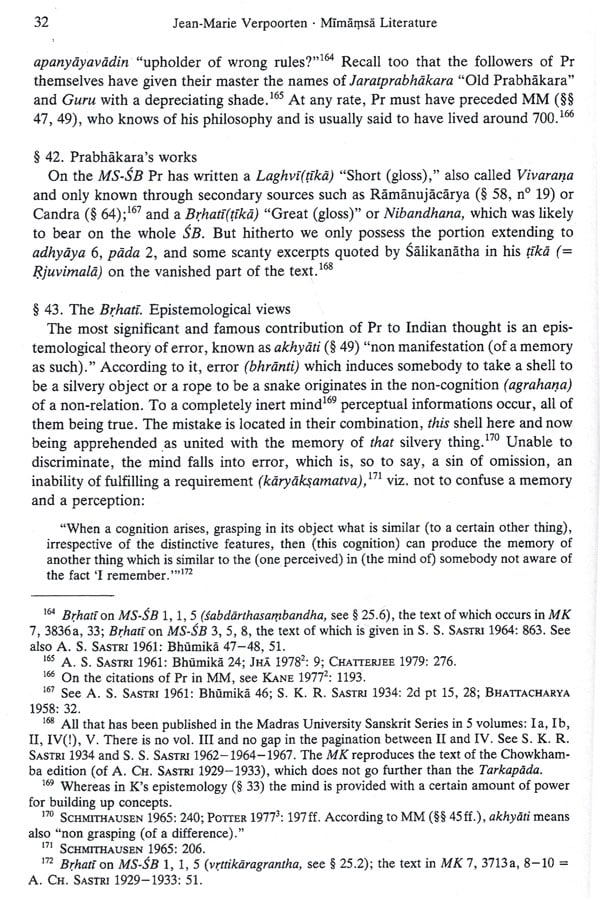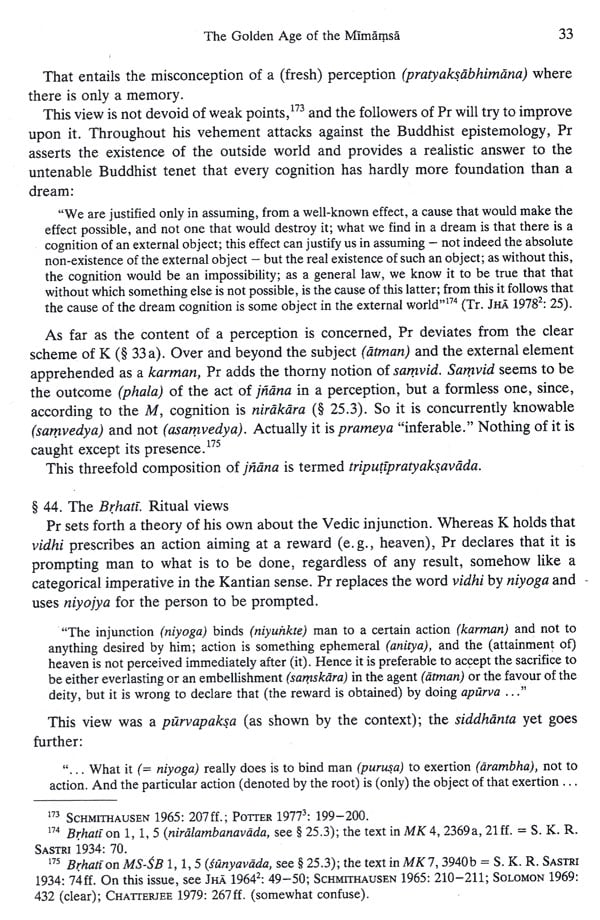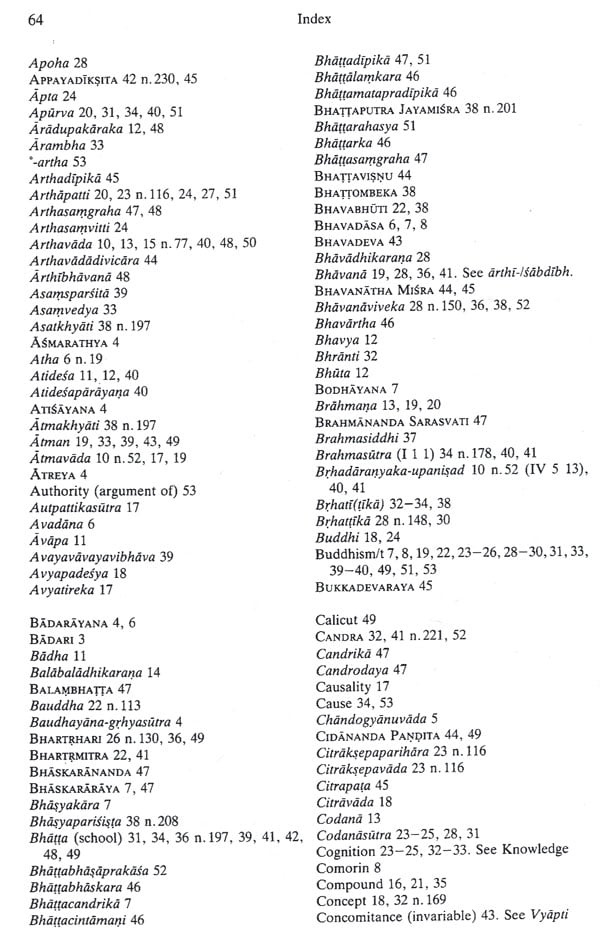
Mimamsa Literature (A History of Indian Literature, Volume - 6, Fasc. 5)
Book Specification
| Item Code: | NAZ796 |
| Author: | Jean Marie Verpoorten |
| Publisher: | Manohar Publishers and Distributors |
| Language: | English |
| Edition: | 2021 |
| ISBN: | 9789388540490 |
| Pages: | 87 |
| Cover: | HARDCOVER |
| Other Details | 9.00 X 5.50 inch |
| Weight | 280 gm |
Book Description
One of the main reasons why Indian thought and Indian civilization make so fascinating a field of study and research lies in their unique history and remarkable structure. Indian civilization has its roots in an ancient heritage, in that pattern of culture which is sometimes called archaic or semi-primitive, sometimes also pre- or non-modern. This culture, or rather structure of the human mind, is, in the main, characterized by presenting, in some essential features, striking contrasts to our modern `mentality.' Without being one-sidedly intellectual, it gives free scope to the emotional and imaginative sides of human nature; our distinction between the subjective and the objective, our contrast between reality and appearance are almost meaningless; the realm of nature and the realm of man are hardly distinguished; thought often appears wrapped in imagination; logical reasoning is by no means lacking but blended with affective and irrational tendencies; the men of light and leading have a bent for the speculative, more or less visionary, mode of apprehension, transcending experience; they are preferably concerned with man himself, his nature and destiny. On such a basis, reflected in many products of their literature, and without denying these origins, the Indians-anthropologically a mixture of immigrant Aryans and `autochthonous' peoples of other descent-gradually elaborated a many-sided, highly developed civilization. This civilization is in no small measure characterized by unity in diversity, by homogeneity not-withstanding the utmost variety and complexity of its ethnic composition; by a multitude of languages and a wealth of different cultural patterns; characterized also by considerable diversity in mental character and enormous differences in religion and social customs, beliefs, and practices varying widely both regionally and, within a given region, from class to class. While preserving the cohesion of its cultural provinces-religion, art, literature, social organization-to an unusual degree and on the other hand acquiring full scope for intellectual effort and pursuits it can glory in remarkable achievements in various fields.
Owing to the integration of a large variety of heterogeneous elements the Indian civilization constitutes a very complex and as to its main current remarkably continuous whole. As it covers the whole of life it has social and religious, economic, artistic, and literary aspects. From the religious point of view, it is an utterly diverse conglomerate of cults, practices, doctrines, and ways of life. Viewed from the angle of sociology it is a stratified system of social classes which is, at least in traditional India, not only given religious sanction but also, like many other fields of human effort, impregnated by a characteristic view of life and the world. The more or less constant elements of this conglomerate, the main features of the Indian 'great tradition' are, to a considerable extent, the belief in an eternal, fundamental principle (brahman), the ultimate source and goal of all existence, the One that is the All and sole reality; the recognition of a pristine body of religious literature as an absolute authority, however unknown its contents ; a deep-rooted want for assuming, maintaining, and clinging to continuity; a craving for a firm foundation on which to build one's life and ideals, and the confidence that one's own existence and the culture of the community to which one belongs are founded on an eternal and infallible basis; the belief in karman, and its complement, the almost generally accepted doctrine of transmigration; the conviction that man's best endeavor should be directed towards escaping from impermanence or final emancipation ; a complex 'polytheism' subsumed in a fundamental monotheism ; a tendency to mysticism and monistic philosophy; a propensity to assimilate rather than to exclude or to abandon what once has been adopted.
This civilization is expressed and reflected by an uninterrupted, immense, and utterly varied literary production from the Rgveda onward which, while continually transforming and rejuvenating itself, has always been subject to processes of adaption and assimilation. A more than the superficial study of many chapters of this literature requires of the reader, to some degree, familiarization with a non-modern `mentality; with a dynamic conception of the cosmic events; with religious convictions indissolubly associated with social life; with a more or less pronounced tendency to be in conformity with tradition and socio-religious norms and ideals; with mythical formulations of thought which, though products of imagination, are far from being a mere fantasy; with various forms of speculation that, as a rule, unrestricted by disciplined confrontation with the results of the objective and analytical investigation, found unlimited possibilities for development. He will be impressed by a luxuriant imagination and a great narrative power; by a sense of the beauty of nature as well as recognition of spiritual values; by the consciousness of man's close and intimate relationship with his natural surroundings in general and his fellowship with the other living creatures in particular. If he is not a professional Ideologist he will learn that India has, throughout many centuries, not only tended to the practice of self-denial, quietism, and asceticism, but also to addiction to the pleasures and luxuries of life; that she delighted in the things of the senses no less passionately than in the things of the spirit; that, while aspiring to noble ideals of conduct, tolerance, and humanity, she was not averse to extracting all happiness possible from earthly existence. He will hear about cunning and unscrupulous statecraft as well as occasional strenuous effort in the province of applied knowledge and great achievements in art and mathematics. Acquainting himself with the `modern' literature he will comprehend the impact of Islam, of the West, the spread of modern ideas, the influence of western ways of life; witness also remarkable outbursts of intellectual activity, transformations in social and is- religious ideas, gradual transitions from a traditional to modern society, a considerable critical outlook on the past, new aspirations for the future, a zeal for reform, and the ultimate remodeling of the orthodox beliefs and traditional habits. In short, when placed reality; in the context of the cultural inheritance of this uniquely rich and many-sided authority, literature will introduce him to the development of the humanities indica in, all its aspects.
However, the reader will also have to accustom himself to an unfamiliar historical background, to books of unusual length, to poems and prose works of uncommon structure, frequent repetitions of themes, and, not infrequently, the richness of material and detail and elaborateness of style. In traditional India, the identity, biography, and circumstances in the life of the authors and the dates of the composition of their works are as a rule not so important as in the West. In the majority of cases, dates are only known approximately. The persons of the authors or compilers are not infrequently obliterated or even fated to remain anonymous forever. Where we would like to base our historical research on reliable facts the only information given to a student of Indian literature often consists of a mythologized biography or some vague, general, and contradictory statements. This is not only due to the fact that most literary works are little historically conditioned but also, and in many cases primarily, to the well-known tendency of pre-literate and traditional societies to subordinate the individual to the group; to the static, and theoretically unchangeable nature of the traditional Indian society and-under the influence of an agelong belief in the secondary reality of all empirical existence, in the almost absolute dependence on the power of karman and the continuous divine interference in mundane affairs-to a comparatively weak sense of individuality.
With a few noteworthy exceptions, all other-medieval and modern-Indian literature depends on or is largely influenced by, the ancient Sanskrit back-ground. To say that Sanskrit literature alone exceeds that of Greece or Rome is an error. It is almost boundless, in the sense that nobody knows its extent and the number of its writings. In the course of its prolonged literary existence Sanskrit-cultivated for literary purposes long after it had ceased to be a spoken language-underwent various and important changes. While many great authors, fond of displaying their erudition, always endeavored to comply with the recognized standards, striving after grammatical correctness and stylistic elaboration, there is, especially in technical or non-brahminical works, abundant evidence of a mixed, or popular, incorrect Sanskrit. It will be seen that the origin of most of the 'modern' literature of the Indo-Aryan languages which, through a Middle Indian (Prakrit) stage, developed from Old Indian, is-like that of the Middle Indian Pali and Ardha-Magadhi-connected with the spread of religious ideas.
**Contents and Sample Pages**
